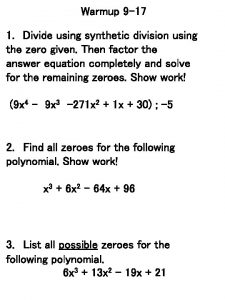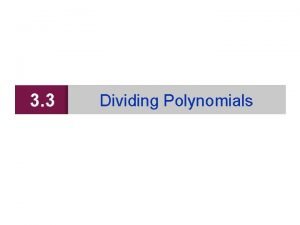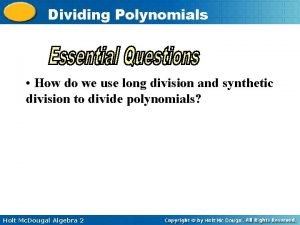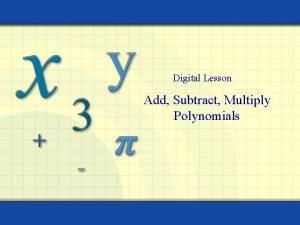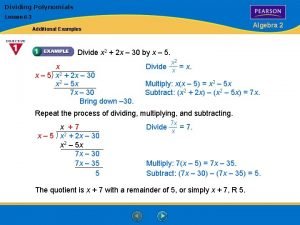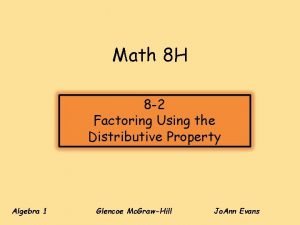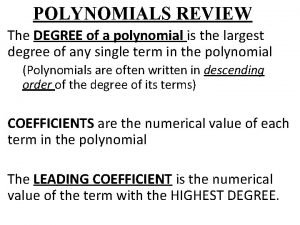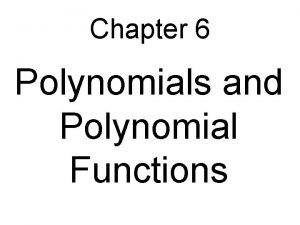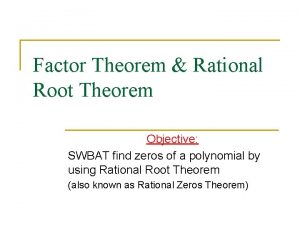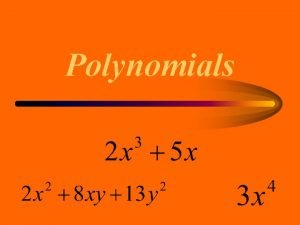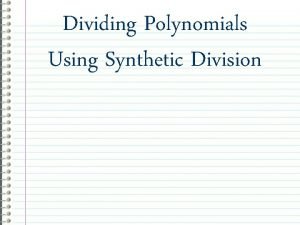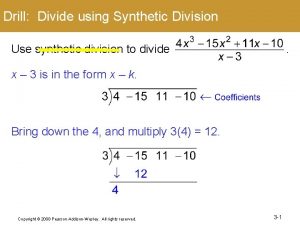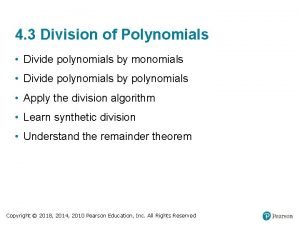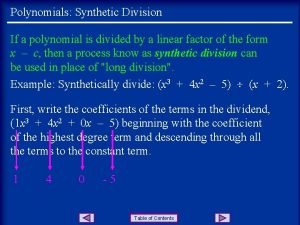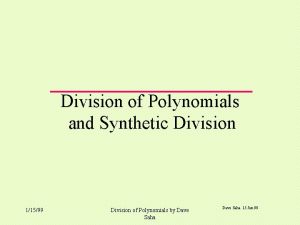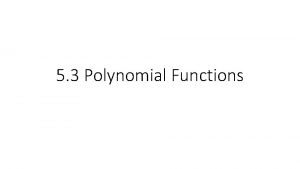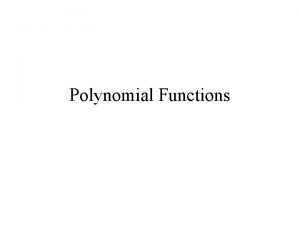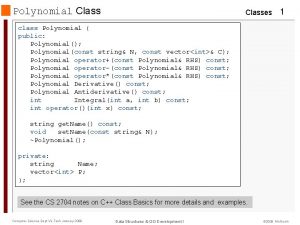Synthetic Division Polynomials Synthetic Division divide a polynomial

















- Slides: 17

Synthetic Division Polynomials

Synthetic Division divide a polynomial by a polynomial To use synthetic division: • There must be a coefficient for every possible power of the variable. • The divisor must have a leading coefficient of 1.

Step #1: Write the terms of the polynomial so the degrees are in descending order. Since the numerator does not contain all the powers of x, you must include a 0 for the

Step #2: Write the constant r of the divisor x-r to the left and write down the coefficients. 5 0 -4 1 Since the divisor is x-3, r=3 6

Step #3: Bring down the first coefficient, 5. 5

Step #4: Multiply the first coefficient by r, so and place under the second coefficient then add. 15 5 15

Step #5: Repeat process multiplying the sum, 15, by r; and place this number under the next coefficient, then add. 5 15 41

Step #5 cont. : Repeat the same procedure. Where did 123 and 372 come from? 5 15 45 123 372 15 41 124 378

Step #6: Write the quotient. The numbers along the bottom are coefficients of the power of x in descending order, starting with the power that is one less than that of the dividend. 5 15 45 123 372 15 41 124 378

The quotient is: Remember to place the remainder over the divisor.

Ex 7: Step#1: Powers are all accounted for and in descending order. Step#2: Identify r in the divisor. Since the divisor is x+4, r=-4.

Step#3: Bring down the 1 st coefficient. Step#4: Multiply and add. Step#5: Repeat. -5 20 -1 4 1 -4 0 0 8 -2 10

Ex 8: Notice the leading coefficient of the divisor is 2 not 1. We must divide everything by 2 to change the coefficient to a 1.

3

*Remember we cannot have complex fractions we must simplify.

Ex 9: 1 Coefficients

 Synthetic division example
Synthetic division example How to divide a polynomial by another polynomial
How to divide a polynomial by another polynomial Synthetic division
Synthetic division Factoring polynomials using synthetic division
Factoring polynomials using synthetic division Synthetic division worksheet doc
Synthetic division worksheet doc Long division vs synthetic division
Long division vs synthetic division Evaluate polynomials using synthetic division
Evaluate polynomials using synthetic division Monomials
Monomials Adding subtracting multiplying polynomials
Adding subtracting multiplying polynomials 4-3 dividing polynomials
4-3 dividing polynomials Divide each term in the polynomial by its gcmf
Divide each term in the polynomial by its gcmf Review graphing polynomials
Review graphing polynomials End behavior of a function chart
End behavior of a function chart Matplotlib inline
Matplotlib inline Synthetic division steps
Synthetic division steps Rational root theorm
Rational root theorm Synthetic division method
Synthetic division method Synthetic division fraction
Synthetic division fraction


